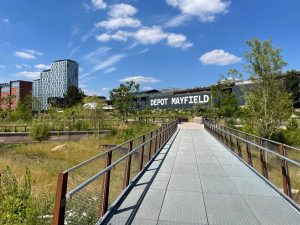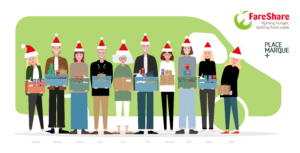Telling the consistent story of a place
Our “elevator pitch” for explaining to someone at a networking event what we do typically goes something like this:
“We design wayfinding strategies for town centres, universities and housing developments.”
Or, maybe, if we’re really feeling inspired, we might say:
“We develop user-centric wayfinding strategies and bespoke design solutions to create spaces that encourage visitors to walk a little further.”
But, in truth, we’re finding that more and more of our instructions are for creating design manuals. So this month our blog is focusing in on this much unsung aspect of our work.
The value of a guide
Why bother with a wayfinding toolkit?
Many of our clients instruct us because they’ve identified the need for telling a consistent story. In fact, every place has a story, and wayfinding is about finding engaging ways to share its narrative, encompassing accounts of people, events and memories. It’s about so much more than guiding people from point A to point B.
Why does that matter? It’s all about staying on brand and it’s particularly important on larger estates, like a university campus or a rural estate, where either the vastness or complexities of a place could easily result in it feeling like a collection of disparate places rather than a coherent whole.
It’s also immensely practical. A wayfinding toolkit sets out the holistic context of the wayfinding strategy for a place. By setting out guidance around information rationale, and by developing a series of codes that inform the design and layouts of signs, a toolkit ensures that the wayfinding of an area is built to last. When the whole strategy is built with longevity in mind, it can adapt to the changing nature of places without needing to rewrite the fundamentals every time.
Having a design manual means that a signage manufacturer can deliver signage on brand at a later date without having to reinvent the wheel – so you don’t have to bring us back into the project for a one-off set of signs.
What even is one?
A design manual, or wayfinding toolkit, provides detailed design guidance on every aspect of a wayfinding strategy. When used properly, the guide provides all the information a signage manufacturer would ever need when producing new signage in order to maintain a consistent place brand.
We make sure that the guide covers everything so that they can get it right first time. It covers:
- Design principles such as typography, iconography and colour and the rules for how to – and how not to use them
- Naming consistencies and rules
- Design cues for varied sign uses such as high-level signage on buildings and entrance signage all the way down to directional signage like fingerposts.
The right tools for rural and urban places
But what areas are wayfinding manuals best suited to? We’ve had successes in a range of different spaces.
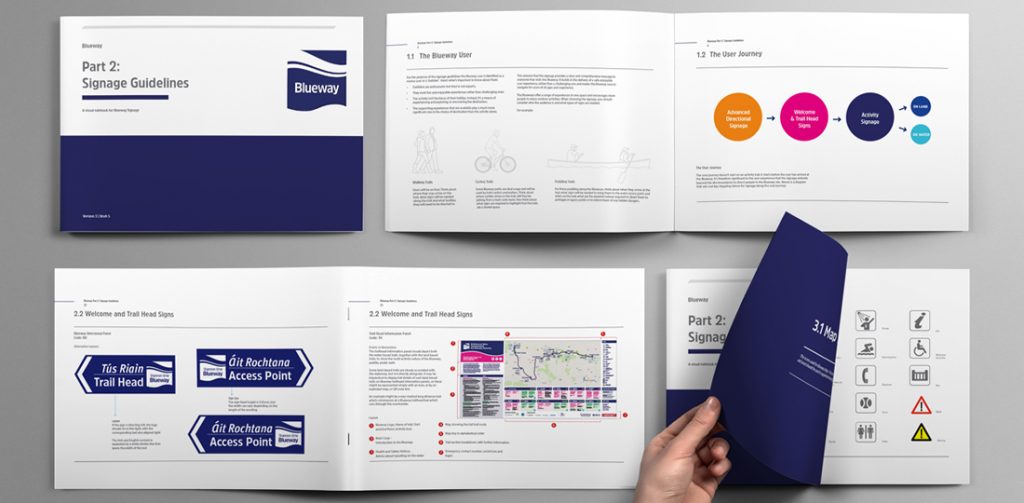
The rural wilds of Ireland
Our recent work for Fáilte Ireland is a great example of a design toolkit for a rural space. Now complete, this vast area is benefitting hugely from having a comprehensive design toolkit for Ireland’s waterways, or, Blueways.
In such an expansive area of interconnecting waterways, achieving a consistent visual brand was key to tying together the vast and varied canal and river networks. With minimal design clutter (helpful to counter the fact that the signs are dual language), the toolkit is ensuring that new signage across the network forms part of a coherent whole. It all helps make visitors’ journeys easier: by making it clear they’ve “arrived” and helping direct where they want to go next, boosting visitor numbers and encouraging active travel.
The hubbub of campus life
It’s just as important in a dense urban area. We’ve helped numerous universities, like UCL, Sheffield Hallam and Manchester Metropolitan University, develop wayfinding toolkits for wayfinding interventions across their campuses.
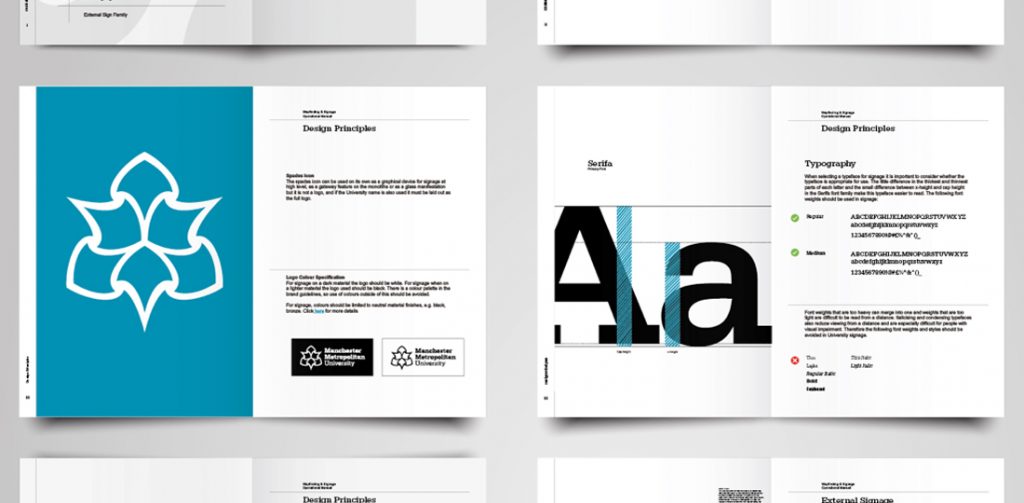
MMU is spread across two distinct campuses close to Manchester’s city centre. We’ve been working with the university for five years and have taken the university’s brand through its evolution. From initially devising temporary signage solutions to give the university more presence and identity during open days, we’ve since prepared a robust wayfinding toolkit and have now designed the signage for some of their flagship buildings, in line with the toolkit. We’re collaborating closely with the estate and its branding and communications teams so that future phases of redevelopment will be able to be rolled out without our input.
Wayfinding toolkits, it seems, work equally well in dense urban areas and expansive rural areas.
The secret to a successful wayfinding toolkit?
Talking to the people in the know
As with all our projects, the focus of a successful wayfinding toolkit is understanding the user.
So, we first identify and bring together key stakeholders to understand who the main users are, how they perceive and describe places and, importantly, where they’re going.
It’s only then that we can devise a meaningful hierarchy of information to be included on signage. And it’s only then that we can identify the right set of rules that will ensure wayfinding interventions are truly accessible to a place’s users.
Keeping one eye firmly on the detail
As wayfinders we always combine our ability to see the bigger picture of a place – how movement flows, where people are going – with our detailed design eye for how graphics will work on a sign.
But when it comes to a wayfinding manual, that eye for detail becomes even more important. Every conceivable graphic detail must be carefully thought through in advance so that the manual covers all bases and faithfully maintains the brand while also offering sufficient flexibility to make it workable.
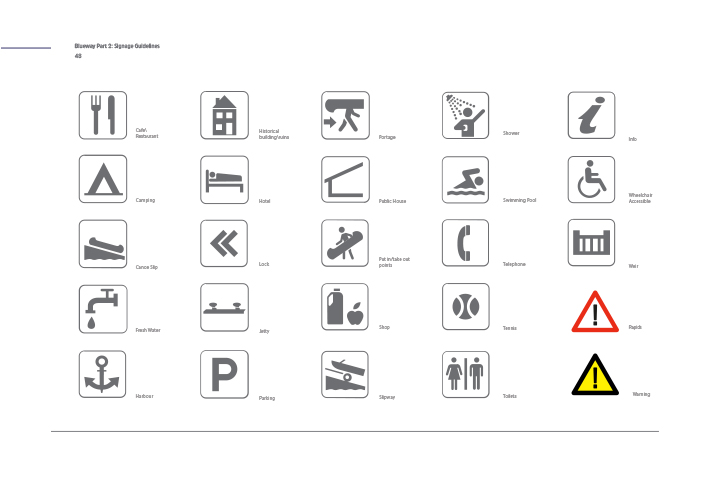
Time for a new elevator pitch?
There’s a lot more than meets the eye inside a wayfinding manual and it’s a valuable tool that enables our clients to stay on the front foot with maintaining coherent and consistent wayfinding language for their place.
And with wayfinding manuals forming such a core part of our offering to clients over recent year, perhaps we need to revise our elevator pitch. So how’s this for an opening gambit?
“We help estate managers devise consistent wayfinding schemes that help users orientate themselves, know they’ve “arrived” and get to where they’re going.”
Whether your place is in an urban or rural location, a wayfinding manual might be the missing link to delivering coherent and enduring wayfinding interventions, to help people understand and navigate your place. Get in touch and let us help you get it right.

